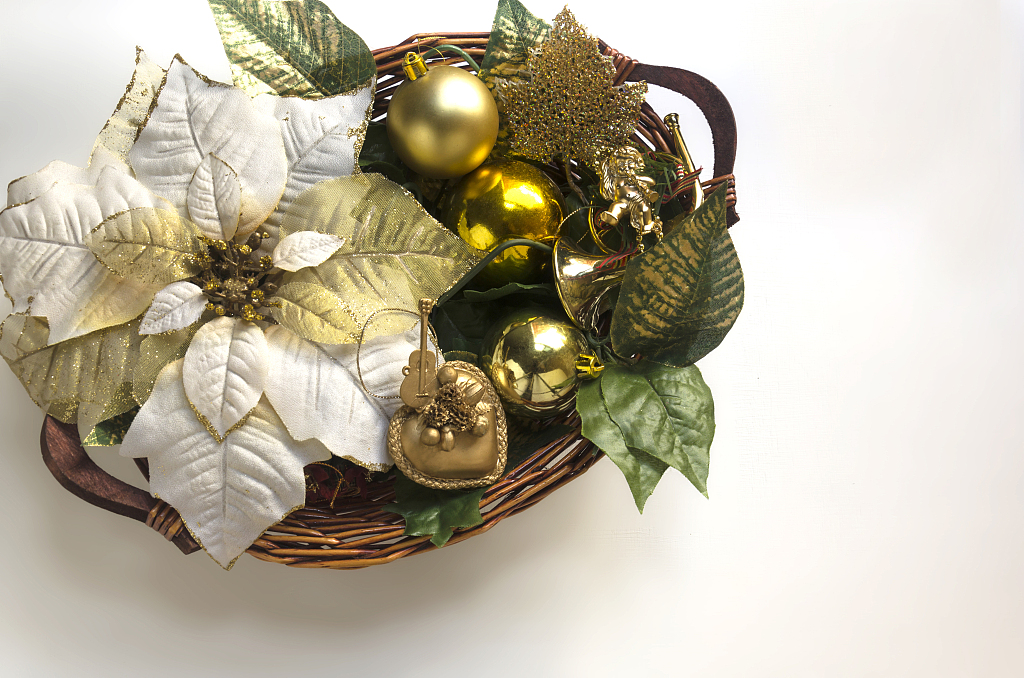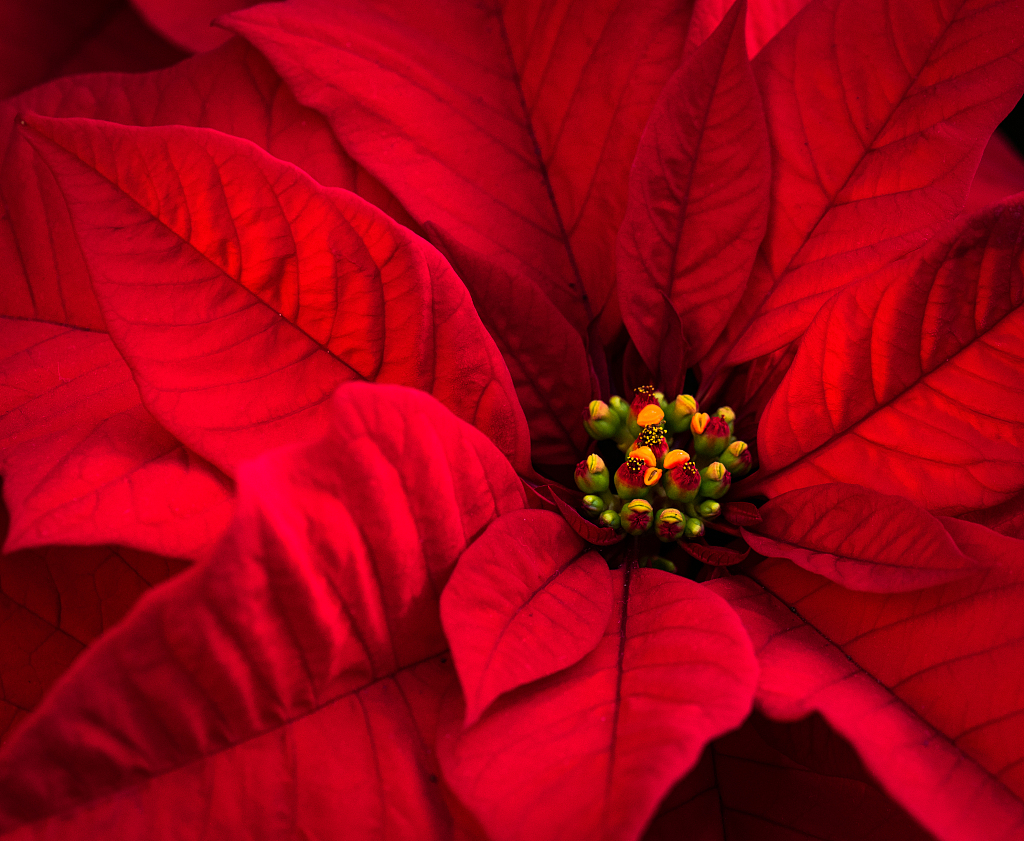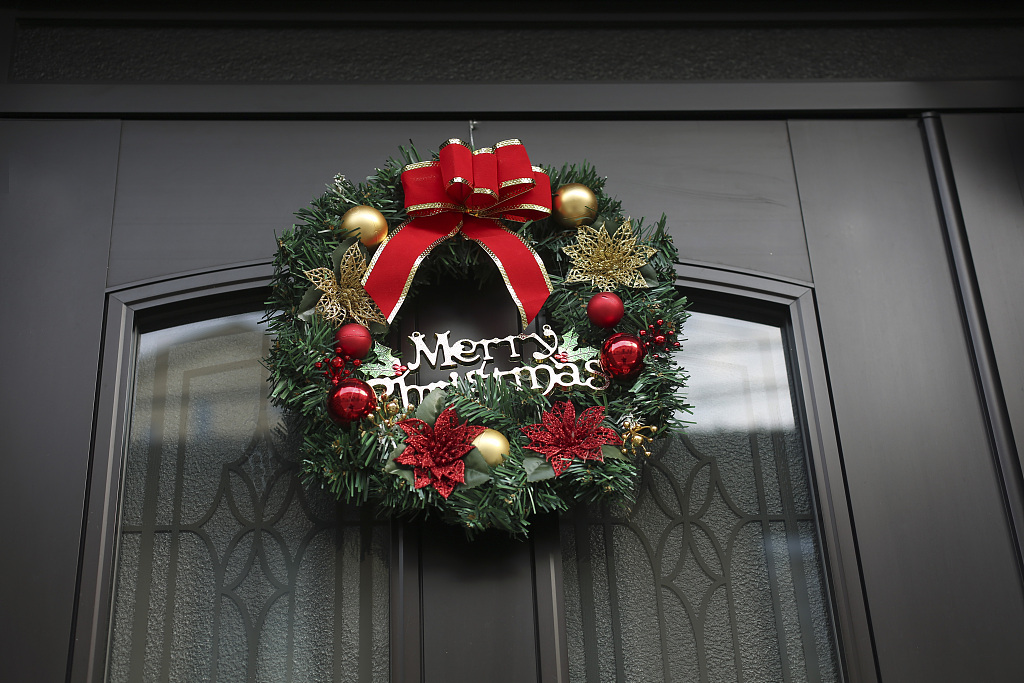With Christmas fast approaching, many are busy decorating their houses and gardens for the holiday. As an important part of the season's decorations, the poinsettia wins the name of "Christmas Star" for the beautiful star-shaped leaf bracts and delicate flowers.

Poinsettia leaves colored in gold and white. /VCG
Poinsettia leaves colored in gold and white. /VCG
Poinsettia originated in Central America, namely Mexico. Well-known for its red and green foliage, the plant is also famous for the long flowering period that can last from October to February. As the bract is the part that should be appreciated, but many mistakenly take it for flower petals, which colors range from orange and white to red. The real flower of the poinsettia is delicate and surrounded by the bracts.

The poinsettia flower. /VCG
The poinsettia flower. /VCG
Many people might throw away their poinsettias when Christmas is over and purchase a new pot in the following year, but for the sake of the environment and has a saving money suggestion, it's worthy to keep this plant till the next Christmas and watch it bloom all over again, as it is easy to take care of.
Still, there are a few things to take into attention. First, control the moisture level and don't over-water it. You should water it only when the soil is noticeably dry. Second, it does best in a warm environment with enough light, so keep it in a room where it can receive some warm winter sunlight.
If you plan to keep it until the next festive season, you can prune it in April and keep it in a cool environment.

Good care allows the plant to survive until next Christmas. /VCG
Good care allows the plant to survive until next Christmas. /VCG
Though the plant is beautiful, it is also somewhat toxic when eaten, so children and pets should be kept away.
Keeping all of these in mind, the poinsettia could be put under the Christmas tree with all the gifts or used to make a Christmas wreath.

A Christmas wreath made with poinsettia flowers. /VCG
A Christmas wreath made with poinsettia flowers. /VCG
(Cover image via VCG)
(If you want to contribute and have specific expertise, please contact us at nature@cgtn.com)

